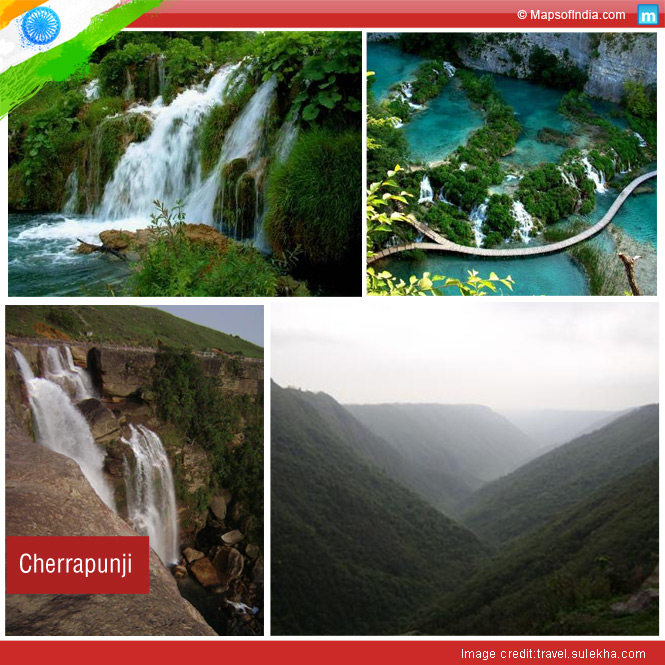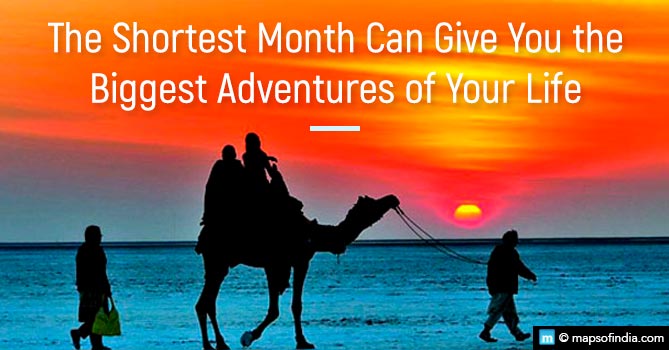You must have read about Cherrapunji (or Cherrapunjee), even in your schools as a place in Meghalaya, India for receiving the highest rainfall each year. Earlier the first, but now it is the second wettest place on the earth after Mawsynram, also in the same state. Nothing except this has ever been mentioned about Cherrapunji though it has much more to offer. Better known as the ‘Jewel Crest of Meghalaya’, Cherrapunji nestles in the East Khasi Hills at a distance of about 56 km from Shillong, the capital of Meghalaya. Cherrapunji has many waterfalls, living bridges, limestone caves and sight scenes to enjoy.
Originally known as Sohra, Cherrapunji was pronounced as ‘Churra’ by British that later on changed to Cherrapunji meaning ‘land of oranges’. The place is quiet unknown from the travel point of view. But Cherrapunji is a great place to visit. Beautiful waterfalls like are Dain Thlen Falls (5 km away), Nohsngithiang Falls and Nohkalikai Falls are easily accessible from Cherrapunji. Stunning caves that are worth visiting are also located close to the town. Mawsmai Cave is one of the most famous caves that is lit up with halogen lamps and 820 ft long. It is located at a distance of about 6 km from the town. Most of these striking caves are still unexplored.
Living bridges are particularly famous in Cheerapunji that are not built but grown by the local people. Secondary roots of Ficus elastica tree that grows above the ground surface are used for making living bridges. Though the process of developing living bridges takes about 10-15 years but these last for more than hundreds of years. One of the oldest living bridges in Cheerapunji is 500 years old and still in use. Umshiang Double-Decker Root Bridge is one of its own kinds in the entire world that consists of two bridges one above another.
Cherrapunjee receives rainfall for about eight months in a year from March to October and most of it happens during the month of June and July. From November to February it is almost dry. So if you want to enjoy the rain and scenic beauty then monsoon is the great time but on the other hand if you love adventure and outdoor activities then visit Cherrapunji during winter from November to February.
Cheerapunji is suffering a lot because of large scale destruction of forests. Each year after monsoons the place dries up. Even finding drinking water becomes hard for the people. The town must be protected to save nature and the beauty of the place as Cheerapunji is a great place to unwind and enjoy.
!@#$%
Related Information :






